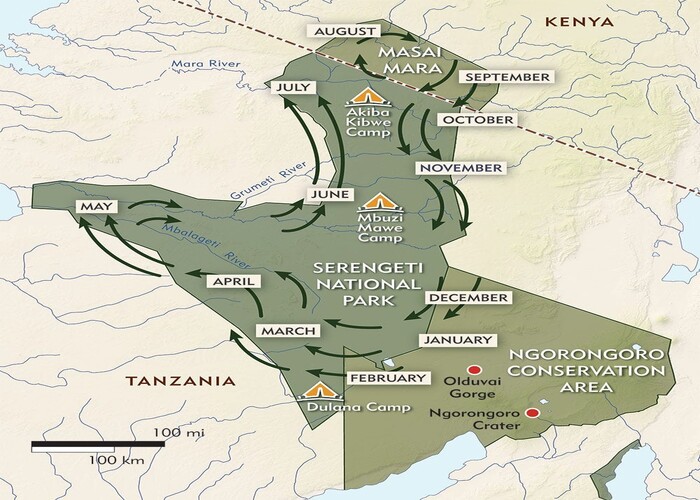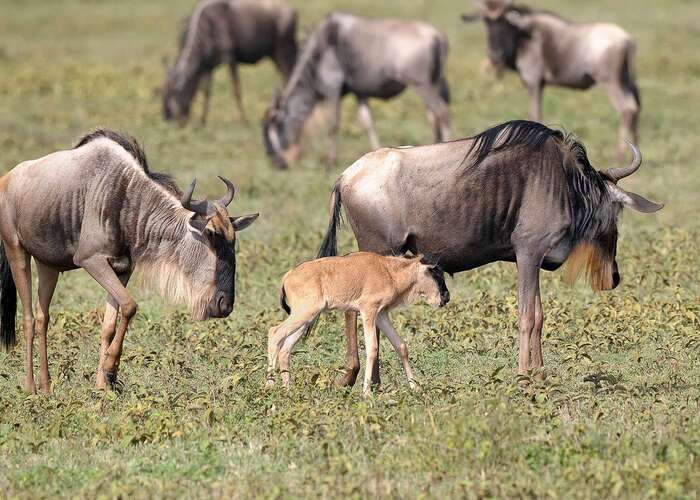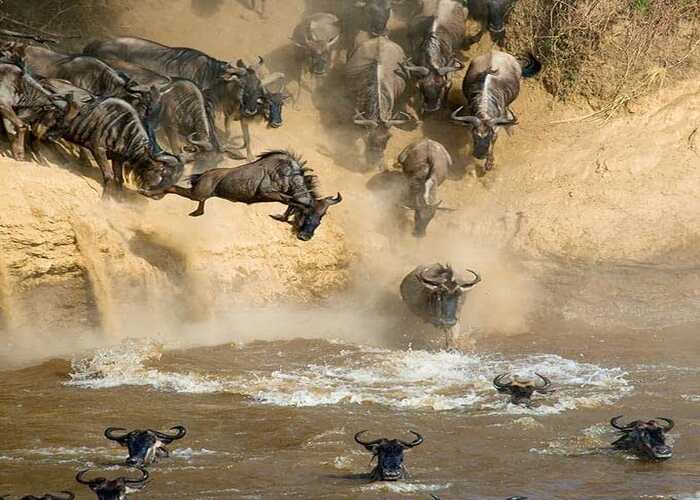Amazing facts about the annual wildebeest migration

One of the most unique natural phenomenon in the world is the annual wildebeest migration which takes place in both in Masai Mara National Reserve in Kenya and Serengeti National Park in Tanzania. From the month of July to October is the best time to book your Masai Mara migration adventure safari. This will allow you to witness massive wildebeests’ herds as they move across the Masai Mara Plains and as they cross the crocodile infested Mara River. Here are some amazing facts about the annual wildebeest migration.

The great annual wildebeest migration is set between the Serengeti National park in Tanzania and Masai Mara National reserve in Kenya. In reality there is neither start nor finish to the endless wildebeest migration as the white bearded wildebeests move in search of fresh grass and water as they complete an annual cycle through the Serengeti — Mara ecosystems in a relentless sequence of life and death. The only beginning to the wildebeest’s migration is when an individual wildebeest is born, and the ending is death.
You can also explore Things To Know about Masai Mara.
Calving Season of the Wildebeests
Each year around the same time, the circular annual wildebeest migration begins in Ngorongoro area in southern Serengeti.

Between January and February, more than 400,000 calves are born within a period of three to four weeks. The female wildebeests drop their young ones in a synchronized birthing and this is normally 8.5 months after the rut. The birthing occurs in the short grass plains of the southern Serengeti and spreading to Ngorongoro area in Tanzania. The predators such as the lions and the hyenas are also in abundance as they enjoy an easy meal although the impact is minimal considering the number of calves born during this time. The most fascinating thing is that newborns gain coordination faster than any other ungulate in that they are on their feet within two to three minutes after birth, and are able to run with the herd at the age of 5minutes. All the same many die within the first year due to predation, malnutrition, fatigue, stampede or diseases. Hundreds of calves get separated from their mothers as herds panic and a calf may never be lucky to find the mother. The lost calf eventually becomes easy target to predators.
Around March, the short grass plains of southern Serengeti begin to dry out and the wildebeests head to the western woodlands. They spread in massive herds across the expansive plains west of Ndutu as they feed on the nutritious short grass and as they follow the rains. They normally follow the rains and growth of new grass.
Mating Season
Sometimes in May as you approach June, as the rains sets in, the herds move north-west past the granite outcrops of Simba and Moru Kopjes into the woodlands west of Seronera towards Lake Victoria. This is when the mating takes place, with more than half a million wildebeests mating in less than a month. Here you get to enjoy an amazing spectacle as the males engage in energetic duels and displays known as rutting as they compete to get the attention of the females, although it’s the females who choose their preferred mating partners. During this period the females will mate in big numbers and this sees the beginning of their gestation.
From the western Serengeti the herds head north crossing several lakes and rivers in Serengeti such as Mbalangeti and Grumeti Rivers- which are crocodile infested, but they have an inherent instinct and determination to cross at any cost. This sees them follow the rains into the Masai Mara National Reserve through Sand River while some spreading towards the Mara Triangle.
Masai Mara Wildebeest Migration and Mara River Crossing

The wildebeests arrive in Masai Mara around end of July. Big groups will gather and build up near the Mara River and eventually they will choose a crossing points which cannot be predicted since it’s genetically imprinted in their minds. Massive crossing is best experienced early in the morning and in the afternoon. The wildebeests also draw the attention of other ungulates such as zebras, gazelles as they move along and you will witness a mix of zebras and antelopes taking part in the river crossing. This time the predators will be enjoying a field day as they have an easy hunt. Predators don’t however follow the moving herds for long since they are territorial.
Back to Serengeti
By late October, as the short rains set in, the wildebeests start moving south again towards Serengeti. The herds move through the eastern woodlands of the Serengeti and thereafter spreading out as they approach the open plains of southern Serengeti. In early November they continue heading south to the short grass plains of the south east as they reach the Ngorongoro Conservation Area to prepare for the birthing period in January. Again the cycle continues.

To book your ultimate Masai Mara migration adventure and witness the amazing facts about the annual wildebeest migration, get in touch with Arrow Adventures Kenya for a memorable wildebeest migration adventure experience.

